Determining Responsibility in Parking Lot Security
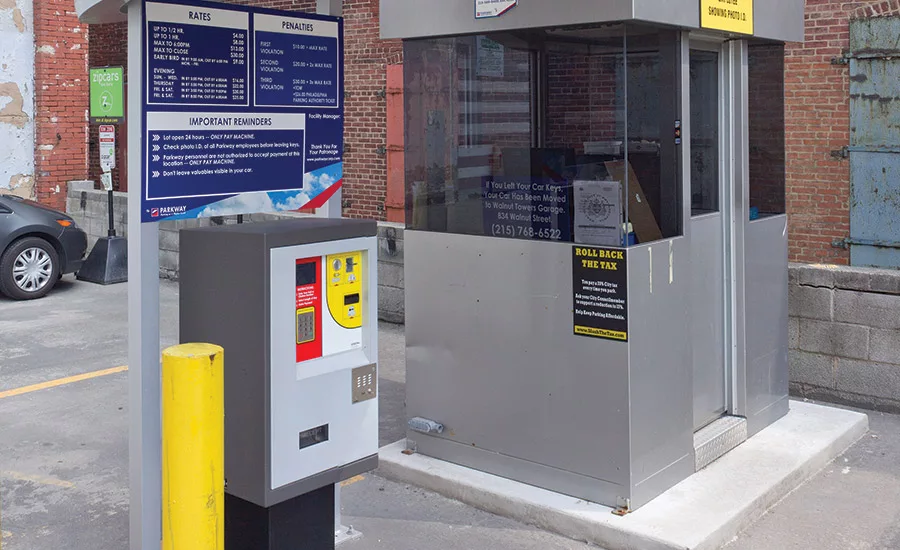

Charles Craige, director of security and asset protection at Parkway Corporation, a parking enterprise, has a new video surveillance solution for easier access to video evidence relative to revenue control and claims detection. Photo courtesy of Parkway Corporation
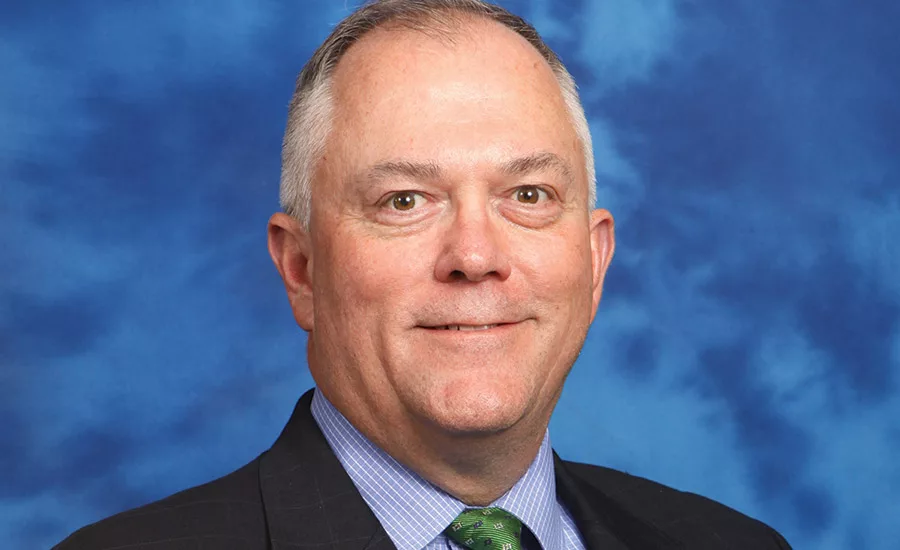
Neal Mulchrone of U.S. Security Associates urges security to continually educate parking users not to leave anything in their vehicles. “Different bad guys see value in different things.” Photo courtesy of U.S. Security Associates
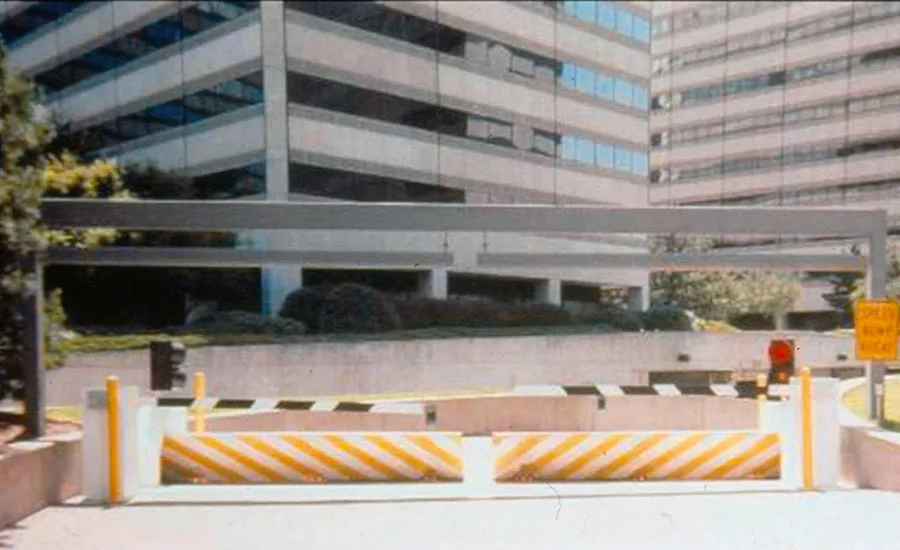
Government entities often have different parking lot and security needs such as the Miami (Florida) Federal Courthouse, which uses hydraulic barricade systems. Photo courtesy of Delta Scientific
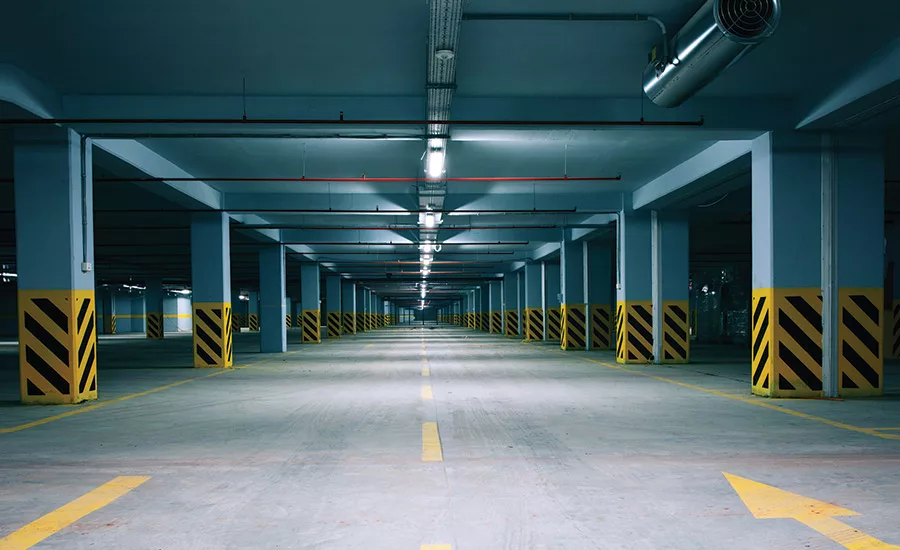
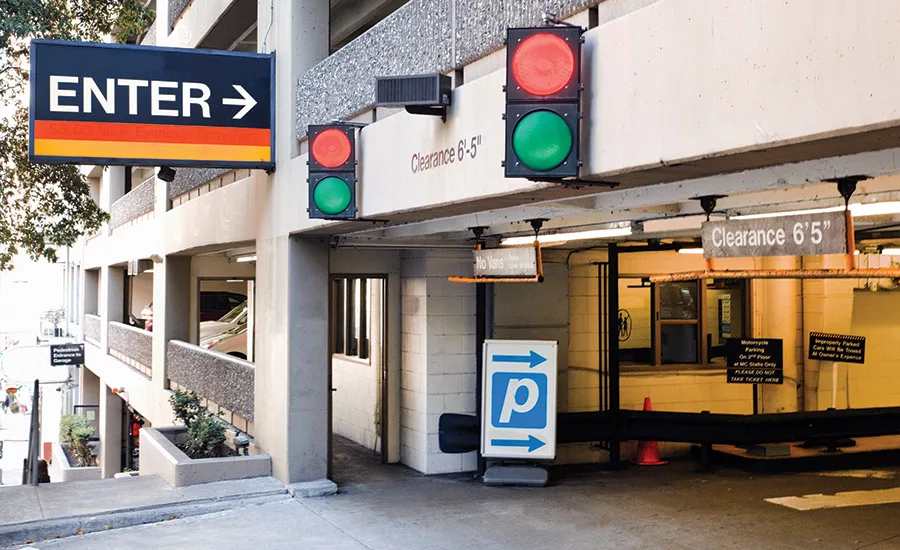

Not every parking lot or garage is the same, nor do any have the same needs to mitigate risks.
It all boils down to a fundamental but complex word that underlies most all security mitigation and litigation: reasonable.
Did the building owner, facility manager, parking firm, chief security officer, security director or loss prevention manager provide a reasonable level of protection at parking lots and garages in the light of the history of incidents; type of business; history of clientele; physical location; application of procedures, policies, people and technology; and regarding immediate response and follow up reaction to situations that arise and alarm?
The details and the devil are both in “what is reasonable,” which can vary among types of businesses served by the parking facility, typical levels of security around the location, past actions taken, history of crime at that location as well as other hard and soft factors.
That Proactive Approach
So as not to get too far down the “what’s reasonable” rocky roadway when resolving disputes or figuring out how to improve things after the fact, savvy security executives and their system integrators as well as additional, diverse stakeholders have plenty to consider, apply and do proactively.
Charles Craige knows the importance of that proactive approach. He is director of security and asset protection for Parkway Corporation, an 85-year-old, family-owned commercial parking and real estate firm that develops, manages and leases approximately 90 parking facilities across the U.S. and Canada.
There is an inherent commitment to service and technology; Parkway has implemented completely automated parking processes at many of their facilities and numerous facilities boast solar-powered parking equipment.
Still, some things needed to evolve.
Parkway had a basic security solution, relying essentially on cameras and VCRs that recorded facility activity while storing video for 30 days. Original purpose: Video to count cars to ensure cars parked matched the number of tickets issued at the entry gate. Still, employees had to walk the facility each evening to manually record cars by color and license plate to determine cars left overnight and accurately charge customers who claimed to have lost their ticket.
Easier Forensics in Parking Incidents
Craige began looking for a more robust video surveillance solution for easier access to video evidence relative to revenue control and claims detection. He also sought a solution to improve the ability to prevent, detect and prosecute crimes and centrally monitor activity at remote locations.
He selected a suite of software and solutions that combines record and store functionality of a traditional video management system with an ability to search and analyze specific video content. Such forensic search capability enables investigators to find more granular data and evidence more quickly. Craige also found value in video analytics such as license plate recognition and dwell time. After a successful pilot, management installed the technology, with the help of integrator Vector Security in all Parkway owned and leased locations.
“I also appreciate the exception reporting capability,” says Craige, in addition to the way the security system provides business intelligence that helps with operations and futures planning.
While not part of the Parkway install, the solution can include directional heat map technology for improved traffic pattern analysis, desired by a growing number of retail enterprises. The aim is to show in some detail how customers move through a store as they shop for merchandise.
Parking garage security was one important focus of video technology that helps protect the massive Las Vegas CityCenter complex, developed by MGM Resorts International and Infinity World Development Corp., a subsidiary of Dubai World. CityCenter is the largest privately-funded construction project in U.S. history.
Parking Security Part of Integrated Design
The solution: the CityCenter installation, which includes the Aria Hotel, integrated IP video technology with analog video and the facility’s IT systems. All technology is managed under a video management system. The single software platform allows personnel to quickly retrieve and view video from any camera – including parking – to pinpoint and resolve issues as they arise.
Aria uses 360-degree IP cameras to cover the casino floor as well as megapixel cameras that can capture clear identification shots of people traveling between different areas. As important, the surveillance system captures data from CityCenter’s parking and retail locations.
The integrated system allows security personnel to conduct both post-forensic and real-time analysis.
The system’s network configuration saves hardware space as well as time and money on equipment and labor, eliminating the need for transmitters and receivers, according to Aria Hotel Surveillance Director Ted Whiting. His responsibility covers casino operations, while the hotel more generally is part of the CityCenter complex.
Government-Owned Parking Different
Parking lot and garage security has similarities when comparing enterprise to government facilities; there are also differences. Enterprise lots and garages are welcoming sites while government facilities more often boast tougher security.
For example, to regulate traffic in and out, deliver a safe place to transfer prisoners and provide secure underground parking for judges, the Miami (Florida) Federal Courthouse uses hydraulic barricade systems from Delta Scientific. The 10-foot wide barricade is a moving ramp – surface-mounted – and which rises to 18 inches when activated. In normal operation, the barricades stay up and are lowered only to allow passage of authorized vehicles.
To accommodate varied access control needs, speed at which the barrier deploys can adjust to the site and overall security requirements. Security at the Miami Federal Courthouse can have different speeds on different barriers and change the speeds as security warrants. The courthouse barriers use loop detectors, which hold the barriers open until the last part of the vehicle has passed the closing loop, located beyond the unit. The detector then gives a pulse on departure, instructing the barrier to rise after the vehicle has passed.
On the enterprise side, theft, vandalism, bogus vehicle accidents and real vehicle dents are among security headaches, according to Lester Peele, director of business development at integrator North Carolina Sound. Regularly, drivers using the parking facilities forget to place their cars in the park position. “And one vehicle knocks into another one,” adds Chris Tyndall, North Carolina Sound’s area manager. Video of such events helps mitigate disputes, says Peele.
Good lighting is an important security and life safety element as is signage. When it comes to security video, parking garage security has a number of challenges. “Getting protected cables to cameras is one. Sometimes we use wireless. Another, with low garage ceilings, is to have vandal proof cameras,” comments Tyndall. “We use 360-degree wall-mount cameras; all cameras are day/night super dynamic networked cameras,” observes Peele.
Emerging Security Solutions Intriguing
When it comes to emerging technology suitable for parking lot and garage security, Tyndall sees current license plate recognition system challenges, for instance. “You have to have cameras positioned exactly and different states have different fonts and colors on their license plates” limiting some recognition systems to what they have been programmed to handle,” he points out while seeing similar gains but also limitations with analytics.
Other twists on parking security and its impact on operations: When appropriate, Jeff Comeaux, president of i3 Concepts, sees promise in tollway tag-to-Wiegand converters in parking applications and which work with vehicle iPass and E-Z Pass systems, among others. The converters let parking security and revenue operations piggyback on the primarily tollway application.
After hours audio handling of parking customers is growingly important, too. Parking clients easily install devices as the audio component from Vingtor-Stentofon by Zenitel inside their parking revenue kiosks and allow after hours calls to be rolled to an outside line or even a cellular phone. Now they can complete a door or gate release remotely anywhere at any time.
Parking Solution Ties to Security Video
Parking facilities use communications solutions integrated with video cameras. One example: A client, Amano McGann, with technology solutions for parking and time and attendance, can associate a camera with a kit enabling a visual of the person calling from the kiosk a video master station. In another example, TIBA Parking Systems, a parking revenue firm, monitors the number of times a gate is released through the master station, by someone inserting a paid ticket and the number of times a gate is released manually. The latter means the person leaving the garage did not pay, and lost revenue can be captured.
Concerning license plate recognition, Jim Hoffpauir, North American country manager for Vingtor-Stentofon, says that license plate recognition provides value to both the guest and the parking lot or garage owner. For example, if a guest has parked in a large multi-level structure or lot and has forgotten their specific space or lost their confirmation ticket, a recognition system could assist with vehicle location. From a business owner’s perspective, license plate recognition can reduce operational cost and help increase the overall safety of the area.
Hoffpauir adds that there are some exciting uses of analytics in the parking space. Instead of having a security officer monitor hundreds of video screens, analytics can assist in detecting suspicious movement and identify sounds such as gun shots, screams and car alarms to alert the security team. In the case of suspicious activity such as a person being followed, security can be alerted and use audio to immediately disrupt the activity by saying something like “Excuse me, you sir, in the red hat! Do you need help finding your car?”
Video analytics can also play a safety role by detecting a car driving the wrong direction or speeding, adds Hoffpauir. Immediately a siren and strobe light could alert the driver to stop.
Ongoing Security Audits
A solid place to start evaluating parking lot and garage protection is through a security audit, most important with retrofit projects, says Neal Mulchrone, vice president, general manager, national accounts, at U.S. Security Associates. He says that if parking is open to the public, electronic security beyond revenue systems is difficult. But if parking feeds a single entity, CSOs can consider combining parking security with existing facility cards. He urges security leaders to continually educate parking users not to leave anything in their vehicles. Different bad guys see value in different things, such as electronics, personal mail or spare cash, for example. So leaving nothing visual is the best policy.
Security officer patrols can be effective, but human nature tends for patrolling people to fall into a pattern. Security supervisors need to make such patrols random and audit them, adds Mulchrone. And, for enterprise employees using a lot or garage, get them involved some way as a security element, too.
Checklist of Parking Lot, Garage Security Solutions
A Scorecard for Critical Communications
Vulnerabilities and Openness
Not Responsible for Security Incident Losses?
Effective Parking Tricks of the Trade
Checklist of Parking Lot, Garage Security Solutions
- Lighting
- Signage
- Security video
- Electronic access controls
- Intrusion detection
- Under-stress automated sound detection alarms and locators
- Emergency phones and intercoms
- Hardened Entry/revenue module with revenue collector or security officer insider
- Patrols throughout the facility
- Parking gates
- Parking systems
A Scorecard for Critical Communications
There still is some debate on how to determine the best communication system for security, safety and business needs in parking lot and garage application.
Here are three factors when it comes to technology use for parking lots and garage security:
- Audio clarity or intelligibility. There should be an independent arbiter of the quality or clarity of the audio, the crucial foundation to any communication platform. Until that is achieved, end users and integrators need to benchmark the audio communications in an environment that simulates their most frequent use patterns.
- Total cost of ownership. Solutions should contain performance management or “supervision,” meaning local, mobile and central abilities to monitor the power and functions remotely from a master station.
- Interoperability. Rarely does a communication solution stand alone. Such systems should be easily integrated into access control and video solutions as well as offer extensions to other business applications.
Information provided by Vingtor-Stentofon
Vulnerabilities and Openness
- Walk the lot or garage. Seek out places where people can hide.
- Make sure you have more than one way for parking users can call for help.
- Evaluate driver signage with the aim of ensuring easy entrance, movement, parking spaces and exiting.
- Don’t forget maintenance. Like graffiti left too long on a wall, the look of neglect encourages intruders.
- Light, reflective or glossy paint use increases lighting.
- Lighting fixtures should aim at brightness, wide coverage and strong color rendering.
- Hazards should stand out to avoid structure damage.
- Large lettered, clearly understood signage always helps.
Not Responsible for Security Incident Losses?
Sorry, but it depends.
It depends on local laws and ordinances and court decisions, now and in the past as precedents set. And – don’t run away from lawyer-speak just yet – identifying who is responsible can depend on whether the situation is a bailment or a lease.
Bailment is “the transfer of possession but not ownership of personal property for a limited time or specified purpose.” Lot and garage parkers relinquish temporary control of their property to another person or firm. In bailment transactions, the bailor (the person or firm of which parkers give their possessions – the vehicle and its contents) has a duty to take reasonable steps to care for the property.
Most often, for a valet or parking garage operator, the transaction is a bailment. The parking lot or garage will be liable for theft or damage to car and contents, but the situation can change if the security steps prior to the incident are ruled reasonable.
In comparison, if the driver parked the car him- or herself and kept the car keys, most courts would consider this a lease. The driver did not relinquish possession of his or her property. In most cases, parking lot and garage operators and their security are not liable for theft or damages in case of a lease.
Here is yet another twist: The vehicle driver pays a fee to get into a parking facility and parks his or her own car, locks it up and take the keys. A majority opinion among courts: It’s a lease, and the parking lot operator and security do not have liability. One complication here – some courts call it a bailment, and a parking operator and security are liable if they did not exercise due care for protection.
Everything may be out the car window if an incident involves driver and/or passenger personal safety, assault or bodily harm.
Effective Parking Tricks of the Trade
Wireless sensors monitor the occupancy of individual parking bays in real-time, gathering data on status and duration. This data go to a hosted software platform to monitor system operation and integrate with third-party systems.
There are 400 to 500 vehicles parked in the lots of the Orangeburg, New York, car dealership Bill Kolb Jr. Subaru, the largest Subaru dealership on the East Coast. At any given time, the dealership has 400 to 500 cars on its lot. Integrator Alex Torres of S.O.G. Security suggested installation of IP cameras. He also advocated using audio with the cameras to create a complete surveillance solution. With the audio, central station personnel would be able to see, listen and speak to anyone who walked onto the car lot after hours.
Looking for a reprint of this article?
From high-res PDFs to custom plaques, order your copy today!




